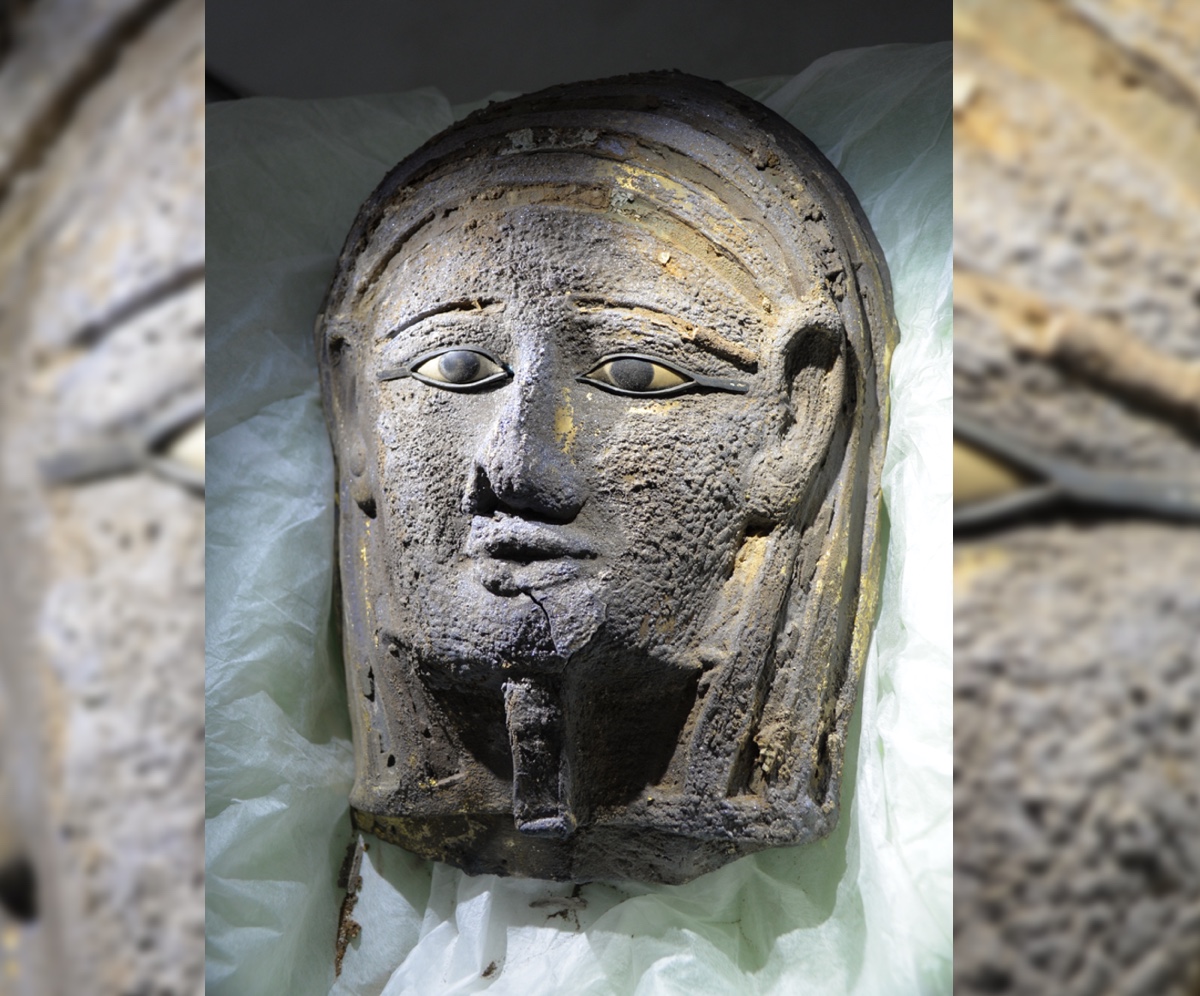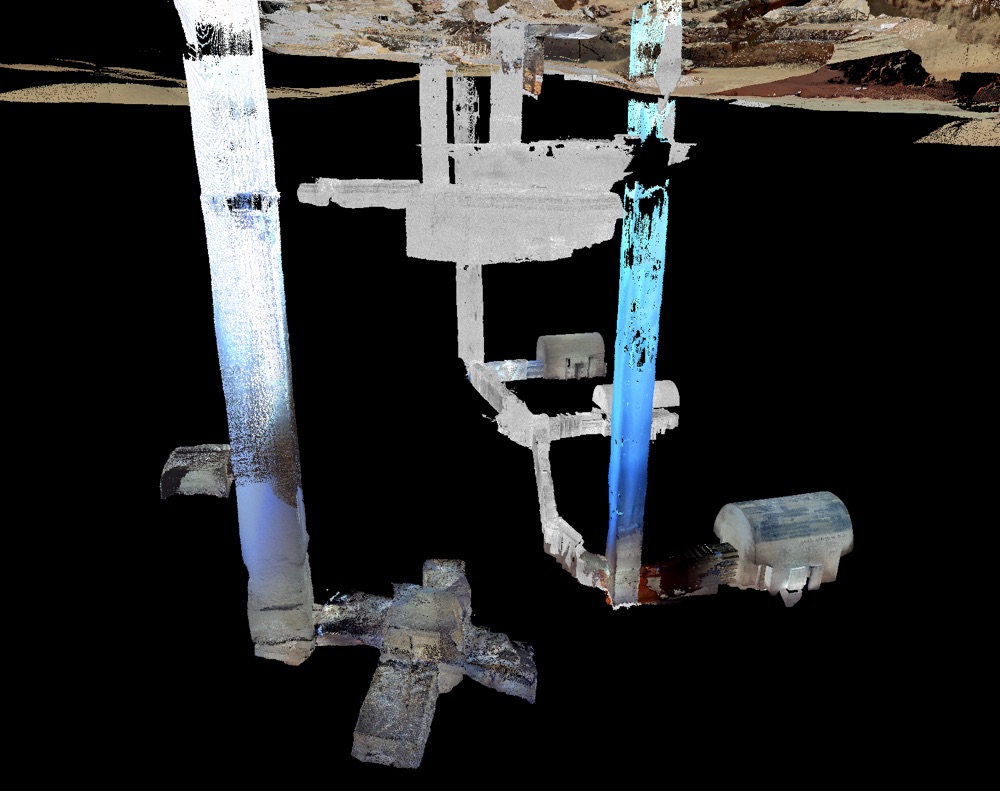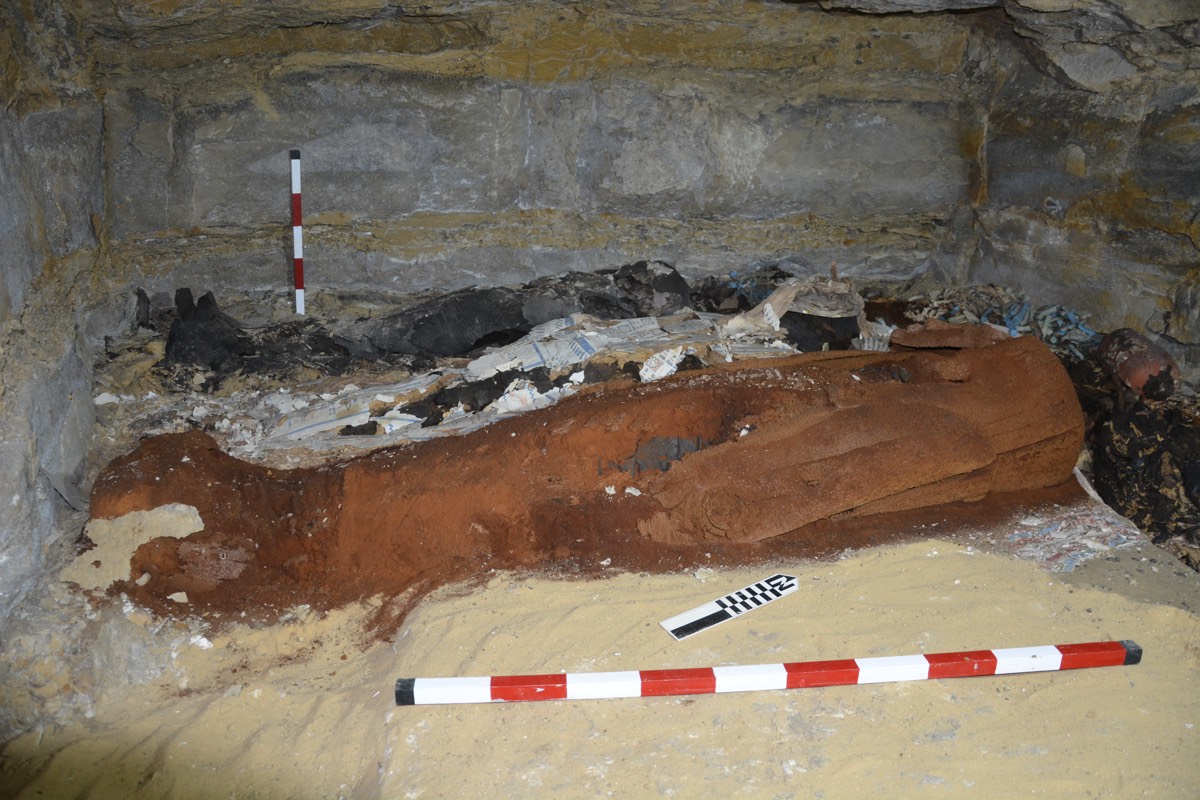Mummy Wearing Gold-Gilded Face Mask Discovered at Ancient Egypt Burial Ground

A silver face mask gilded with gold, a mummification workshop, mummies and sarcophagi have all been discovered at a tomb complex in Saqqara, Egypt, an Egyptian-German team announced this morning (July 14).
The complex contains several burial shafts dug into the ground, some of them extending more than 100 feet (30 meters) deep, the team said in a statement.
At least some of the finds date back around 2,500 years, including the silver face mask, which dates to sometime between 664 B.C. and 404 B.C., the statement said.
The eyes of the face mask contain calcite, obsidian and a black gemstone. [Photos: Ancient Egyptian General's Tomb Discovered in Saqqara]

"The finding of this mask could be called a sensation," Ramadan Badry Hussein, head of the Egyptian-German team, from the University of Tübingen in Germany, said in the statement. "Very few masks of precious metal have been preserved to the present day, because the tombs of most ancient Egyptian dignitaries were looted in ancient times."
The mask was found on the face of a mummy hidden inside a badly damaged wooden coffin that has an image of a goddess called Mut on it. From the writing on the coffin that is still legible, researchers can tell that the man was a priest who served Mut.
Mummification workshop
Archaeologists also found the remains of what they think is a mummification workshop, a place where people were mummified before burial, in the tomb complex. It contains bowls and measuring cups that have the names of oils and other substances used for mummification written on them. Inside the workshop, they also discovered two large basins that were likely used to dry mummies with natron and prepare bandages that would be used to wrap them, the statement said.
Sign up for the Live Science daily newsletter now
Get the world’s most fascinating discoveries delivered straight to your inbox.

The workshop is in the remains of a building made of mudbrick and limestone. This building is above a large shaft that leads down to several burial chambers holding mummies, sarcophagi, alabaster vessels (used to hold the organs of the deceased) and shabti figurines — the Egyptians believed these figures could act as servants for the deceased in the afterlife.
Excavation and mapping of the tomb complex are ongoing. The research is sponsored by the German Research Foundation. Many of the team's German researchers are from the University of Tübingen.
Originally published on Live Science.

Owen Jarus is a regular contributor to Live Science who writes about archaeology and humans' past. He has also written for The Independent (UK), The Canadian Press (CP) and The Associated Press (AP), among others. Owen has a bachelor of arts degree from the University of Toronto and a journalism degree from Ryerson University.









